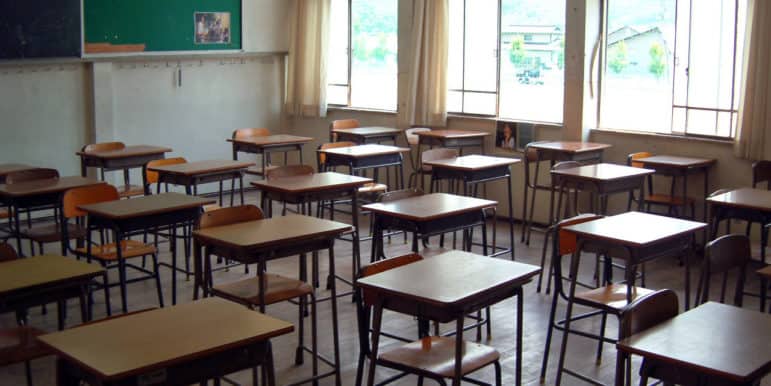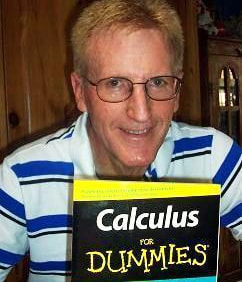
f_a_r_e_w_e_l_l / Creative Commons
“As I look at the public school system which drew me to it some 44 years ago, I see it burning,” the author writes. (photo cc info)
Editor’s note: Read Hansen’s follow-up to this column, which explores how to end public education’s death spiral, here.
COMMENTARY: We received the call about eight at night. The barn at the farm was on fire. When we arrived, the volunteer fire department pumper was having trouble sucking water out of the pond to direct at the barn, now engulfed in flames. The animals were safe, but the structure was not long for the world.
I turned to my father, tears running down my face, and said, “Do something — do something!” My Dad, staring straight ahead, just said, “It’s too late; it’s over.” It was over. As much as it hurt to give up the memories, the reality was that nothing could be done.
In time, we did rebuild, but the new barn was smaller and with much less personality, quite antiseptically Spartan. The fond recollections of good times in that old barn, which gave it shape and meaning, were gone. It was time to move on.

Courtesy photo
Del Hansen
As I look at the public school system that drew me to it some 44 years ago, I see it burning. The fuel is antiquated thinking and resistance to change in a world that only knows change. The match is state and national governmental intervention without proper input. The union and even local administration is the broken pumper that can’t or won’t stop the destruction. The little kid is me, just 60 years removed from that tearful night, and also thousands of teachers scattered across the country watching their profession go up in smoke. Common sense is my father saying, in the face of abject horror, that it is indeed over. Time to move on.
Public education has always been under the microscope. Every national and state incoming administration has its own idea of how to fix a monstrous bureaucracy that seems too cumbersome to heal itself and perhaps too large to die. But it is on fire, I do believe.
How did it get that way? Considering the thousands of managerial missteps and an apathetic public, how could it not get that way?
Tracing the source of decay in public education is almost impossible, for there are so many sources, some obvious and others embedded in years of neglect. But one clear point of origin was the Elementary and Secondary Education Act of 1965 (ESEA) which, ironically, was written to expire in 1970, but has been reauthorized every year since, morphing into the No Child Left Behind Act of 2002 (NCLB) and the more recent meddling of former Obama Education Secretary Arne Duncan and his “Race to the Top” (RTTT). Title VI of the Civil Rights Act and Title IX legislation of the 70s further imprinted the federal government’s stamp on public education in these United States. The fangs sank deep.
At the time, with huge disparities between have and have-not states and between white and non-white schools, some sort of enticement and even push from the federal government to revise public education was forthcoming. However, with federal intrusion and funding came a Gordian knot of regulations and increasing control. As pressure increased from conservative groups to institute vouchers to expedite the privatization of public education, legislators, unwilling to go as far as to support vouchers but willing to at least show shallow support for public ed, clamored for more accountability.
This would occur, of course, through more regulations and more non-local control. The business model of education crept closer. Student progress would be monitored not so much by caring, engaged teachers but through data extracted from long series of standardized tests created through a national curriculum — Common Core.
During this time of upheaval and flux, colleges of education in most universities remained detached and aloof. In my own personal experience, they were and are very much “out of the loop” and confused about the evolving state of affairs in public schools. They live in their own world. Though providing some annoying and peripheral chatter and even lawsuits, the unions, though not explicitly signing on to support NCLB and RTTT, have been surprising bedfellows with the very legislation fanning the flames of destruction. Claims that educational unions must be busted and eliminated before real reform can be realized are anchored in the memories of days past. The main problem today is that non-educators now control the educational process — and they, quite frankly, are just putting chrome and new wheel rims on a rusting Studebaker.
In the middle of this disaster have been the teachers, beset by non-teacher regulators and rule-setters and ignored by a public seemingly confused by conflicting reports of the state of public education in these United States. A recent Gallup Poll revealed that while a majority of Americans felt that public education was not competitive with the other nations and not preparing children for the 21st Century, they also thought their own hometown schools were just fine. It was everybody else’s problem. To make the situation hotter, crazier, and even desperate, the “Race to the Top” exemption for NCLB demanded that students be tested with massive batteries of new Common Core-based standardized assessments and the results applied to grades or ratings of teachers and schools.
Why did “Race to the Top” become an option for already cash-strapped states, considering the procurement and administration of these tests would be almost prohibitively expensive? Well, it was a clever but deadly alternative to the Bush-Kennedy No Child Left Behind Act, which essentially ensured that all public schools would be failing by 2014. According to NCLB, all public schools had to guarantee that all children would be proficient in reading and mathematics by the target date, with expectations and punishments ramping up over the interceding dozen years. Private schools were exempt. As Armageddon approached, Race to the Top allowed states to postpone abject failure by agreeing to adopt a new set of federal rules that required states to rank and evaluate schools and teachers based on test scores of children.
To the uninformed, which would be most of the population, basing ratings and evaluations on tests seems not only plausible but, well, very business-like. The problem with this approach is that students do not have only one teacher in a confined classroom space for the entire year. Students are shared. They move between teachers. Students are mobile, with significant numbers of children moving from school to school, making it virtually impossible to assign blame or credit to any one teacher. And, most importantly, the assessment system was devised and implemented before the curriculum was developed and overlain to the districts. It was classic cart-before-the-horse administration, but come or Hell or high water, it would be implemented. It is analogous to giving the test on Moby Dick before students read the book and teachers discussed it with them. In today’s educational world, assessment drives the curriculum instead of curricula driving assessment. It is a recipe for failure.
Not a single private school in the country, and there are thousands, uses any of these expensive standardized assessments to guide their curricula. None. There is a reason for this: It is incredibly expensive and it doesn’t work. Most reasonable people and virtually all practicing classroom teachers can see this glaring flaw, but an almost maniacal obsession with testing and data retrieval by Pubic Education Departments, to the exclusion of actual teaching and learning, still guide many state school systems. New Mexico’s educational brain trust in Santa Fe still hangs its hat on testing, conveniently ignoring the big questions. There seems little chance that this affixation will abate until there is a regime change in the Roundhouse.
Things are a mess. We can see that. Even with the weekly rosy-cheeked spin on dismal statistics by our state Pubic Education Department, the current state of public education is alarming. Superintendents clamor for more funding and legislative finance chairs warn that money is drying up. Volatile energy markets and an increasing Medicaid budget do not bode well for quantum jump in school funding advocated by public education advocates. Something has to give. The barn is burning down. But is it, in fact, over?
This writer, a veteran of many years of teaching, a proud recipient of some awards in teaching and administration and a fierce supporter of the teaching profession, has some suggestions. They may shock and disappoint some teaching friends and colleagues. They may confuse others. Some may see merit in them. But as I watch the utter ineptitude of federal administrators, state educational officers, and local administrations impeding the educational opportunities for our children, I clearly remember that night with my father as we watched the barn burn down. It may indeed be time to move on.
Del Hansen is a four-decade veteran of the teaching profession, having taught math and physics at the secondary level, post-secondary math methods, and working as a high school administrator. Though currently retired, he continues to work with the private Golden Apple Foundation as an evaluator for their teacher of the year award and teaches music history to senior citizens.